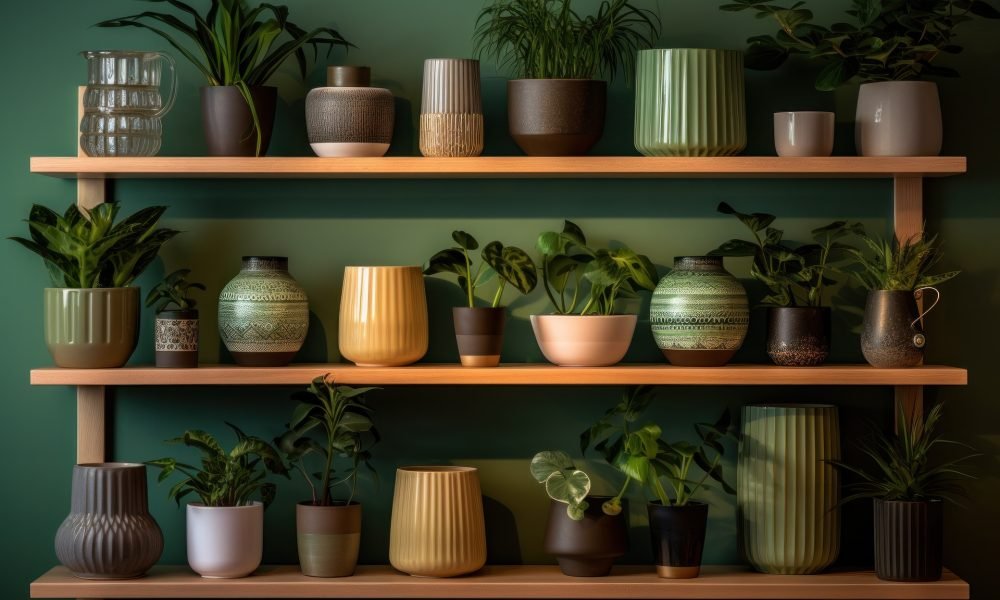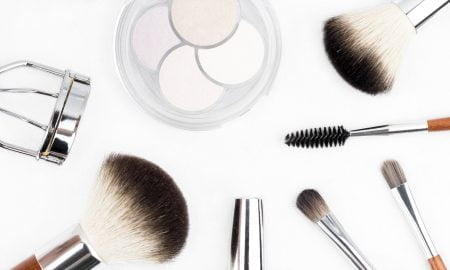





Some people make plant care look so easy and effortless, while others struggle to keep cactuses alive. If you fear that your lack of gardening skills will prevent you from incorporating greenery into your home décor and enjoying all the benefits that indoor plants provide, we’re here to put your worries to rest and reassure you that the idea of a green thumb is nothing but a myth.
Although some individuals might have a certain inclination toward growing plants, this is not some divine gift bestowed on certain lucky mortals by the gods of nature. It’s a learned skill that takes time, patience and practice to master, which means you too can learn how to do it.
So, if you’re dreaming about turning your home into a green oasis with plants and flowers everywhere but you haven’t had much luck until now, here are some tips that can help you make amends and become a better plant parent.
Pick the right pot
There’s a wide variety of pretty pots and planters available on the market in every shape and style imaginable. However, when choosing planters, functionality comes first and aesthetics after. It’s important to pick a proper-sized pot to make sure your plant has enough room to spread its roots and grow. If you notice that your plant’s roots look cramped and have started to stick out of the vessel, it’s a sign that you need to transfer it into a slightly bigger pot.
You should also check to see if the planter has holes in the bottom that allow excess water to drain away in the tray underneath. Without these holes, the soil can accumulate too much moisture and cause the roots to rot.
As for the type of planter you should choose, it largely depends on your needs and preferences. For example, nursery pots are ideal for small gardening projects, while wall planters and hanging baskets allow you to create vertical gardens. You can opt for planters on wheels so you can move your plants around the house easily until you find the perfect spot or transfer them into the garden during the warmer months.
Use adequate potting soil
If you plan on re-potting your plant, pay great attention to the soil you’re using. The soil serves as a medium for growth, filtering the water and providing your plants with essential support and nutrients, so you can’t just fill your pots with any kind of soil you can get your hands on and call it a day.
Even if you’ll have to spend some extra money, the best thing you can do is purchase a few bags of potting soil from the shop as these mixes are free of weed seeds, ensure adequate water drainage and are often enriched with nutrients and fertilizers that can help your plant thrive.
Establish a watering schedule
How often and how much should one water house plants? This is a dilemma that every plant owner has faced at some point in their lives. Too much water can drown your plants while too little can cause them to wilt and die, so you need to be mindful and find the right balance.
Unfortunately, that’s easier said than done considering water amount and frequency varies from one plant to another. However, there are a few things that can offer guidance in this respect. If the soil feels dry and crumbly to the touch, it’s a clear sign that you need to water your plant. Leaves that are turning brown or look shriveled also indicate that your plant is underwatered. Keep an eye on these signs and learn to listen to your plants so you can establish a watering schedule for each one of them.
Make sure they get enough sunlight
Just like watering, plants also need adequate light for optimal growth. Some plants prefer direct sunlight, while others thrive in partial sun or shade, so you have yet another dilemma on your hands. The only thing you can be sure about is that no plant can survive in the dark.
Fussy plants might require you to experiment a bit with location and move them from one spot to another until you finally find a place that seems to be right for them. As for sun-loving plants, placing them in balcony planters or on your window sill where they can enjoy plenty of sunlight is a great idea. After you’ve found them a permanent home, don’t forget about cleaning them regularly and adding fertilizer, if need be.
Get to know your plants
One of the most important aspects you need to keep in mind is that different plants have different care requirements. Although certain guidelines and rules apply to most indoor plants, there’s certainly no one-size-fits-all solution that you can use when tending to your green friends.
If you want to keep your plants alive and thriving, you need to do a bit of research and learn about their care needs. Find out how much sunlight or shade they prefer, how often you should water them, if or when they require fertilizer and so on. If you buy plants from a flower shop, you’ll most likely find care instructions on their tags or you can simply ask the florist for advice. It’s also a good idea to do a bit of digging yourself as there are plenty of online resources that can teach you everything you want to know about every plant species out there.
And since you’re a beginner, you might want to start with easy-maintenance plants like aloe vera, ZZ plant, succulents, lucky bamboo and others, until you get the hang of it and become a more confident plant parent.
Keeping houseplants alive is not as complicated as you might think. Once you’ve mastered these plant care basics, you’ll be able to keep your greenery in top shape and create your own indoor oasis.








